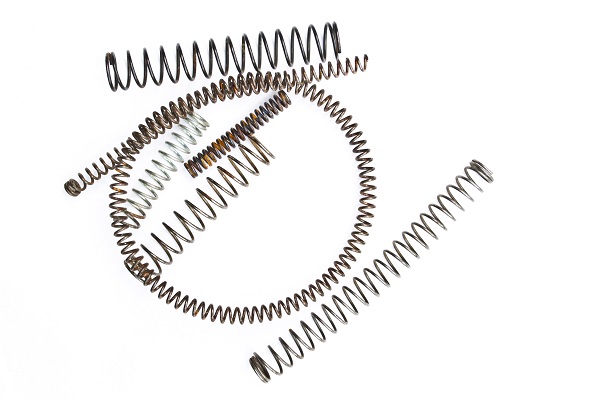Music Wire Spring Corrosion Resistance

In tension 65 to 75 percent.
Music wire spring corrosion resistance. Music wire is made by what is known as a hard drawn process meaning it will be catered to its specific purpose. Springs commonly use precipitation and austenitic hardening. In torsion 45 to 50 percent. Due to this a music wire can endure high stress still delivers outstanding performance under several normal recurring applications.
It s often used to make springs and wire rope. Music wire cold drawn is a high carbon spring steel that has uniform high tensile and the ability to withstand high stress under repetitive loading. Elastic limit percent of tensile strength. Cold drawn and precipitation hardened after fabrication.
Shot peening process can be used on music wire springs to improve fatigue life. Cold drawn and aged. Common considerations with regards to material include operating temperature corrosion resistance requirements and spring parameters needed. Co 39 0 41 0 cr 19 0 21 0 ni 15 0 16 0 fe balance.
Music wire is a high carbon steel alloy which finds its major use in manufacturing springs. It is the most widely used stainless spring wire because of its high corrosion resistance properties and good tensile strength. The sizing is usually specified to a decimal inch. The addition of molybdenum gives 316 stainless steel excellent corrosion resistance.
This wire will spring back after bending. Use it in a variety of marine and chemical processing applications. Mechanical properties of music wire springs. Maximum working temperature is 120 degrees celsius.
It is known to offer uniform and high tensile strength and high elastic limit. The mechanical properties of spring wire are as following. Lee spring offers both stock springs and springs made to specifications in many material options. Type 302 stainless steel wire is a general purpose stainless alloy typically composed of 18 chromium and 8 nickel.
750 1100 f. Good corrosion resistance at moderately elevated temperature. Alloy steels with 10 percent or more chromium provide better corrosion resistance than alloy or plain steels. For spring applications it is generally furnished in the cold drawn condition.



















